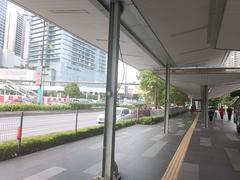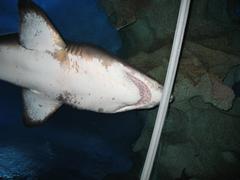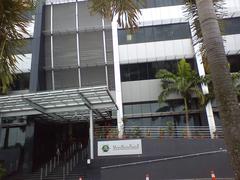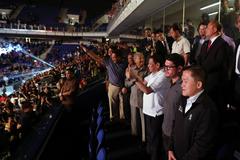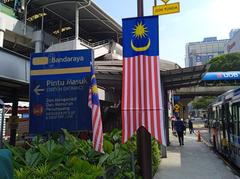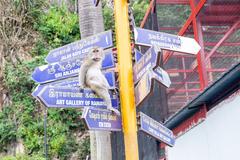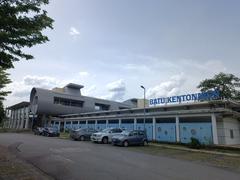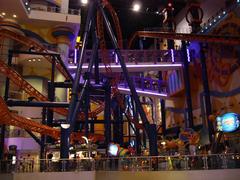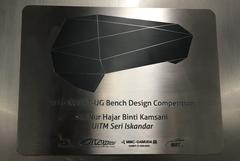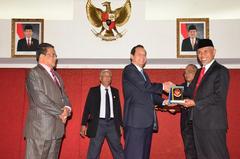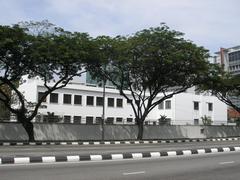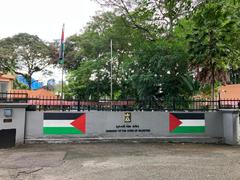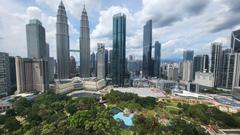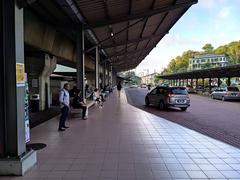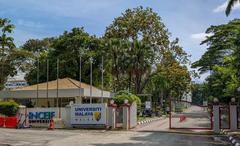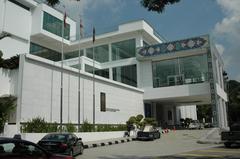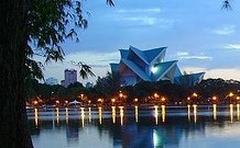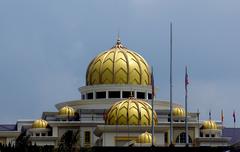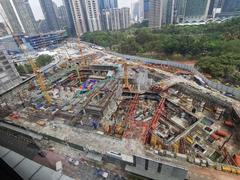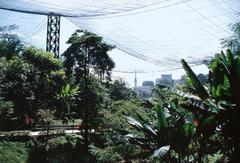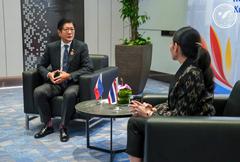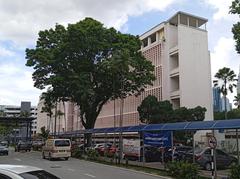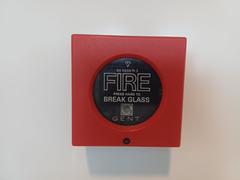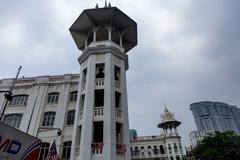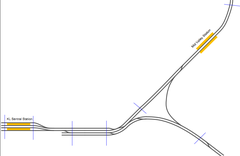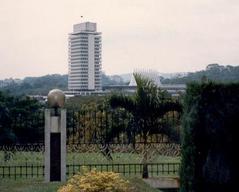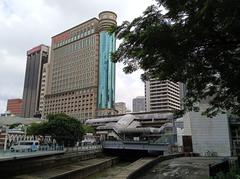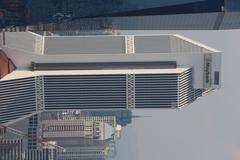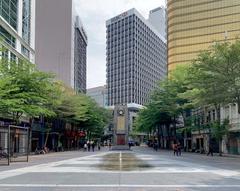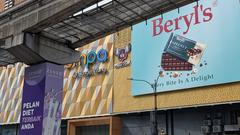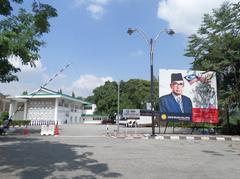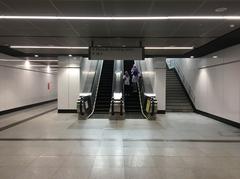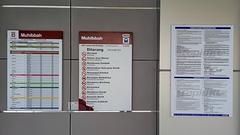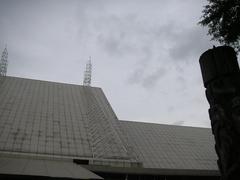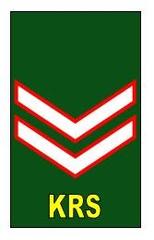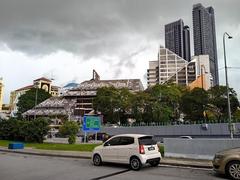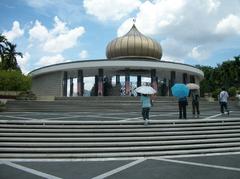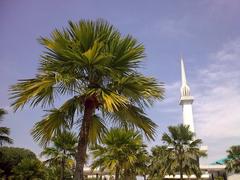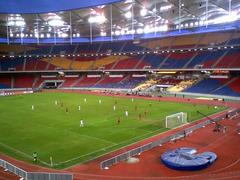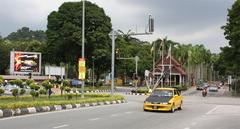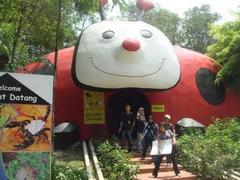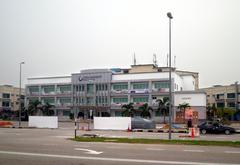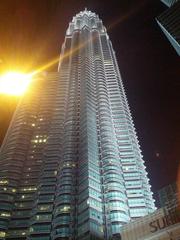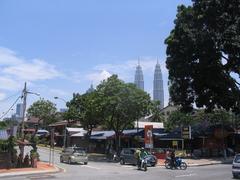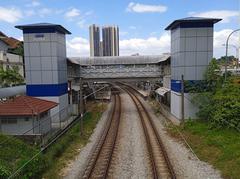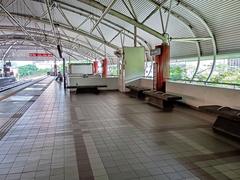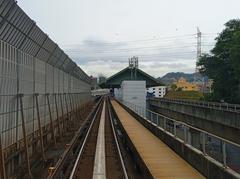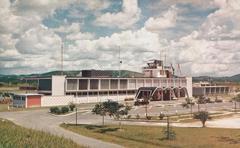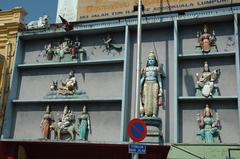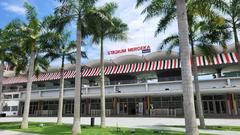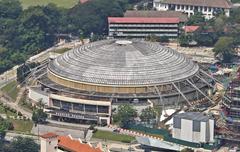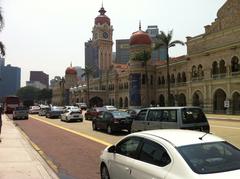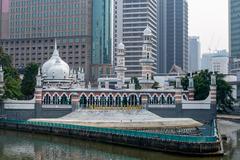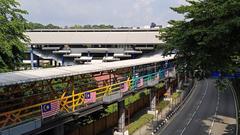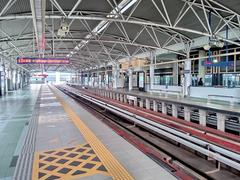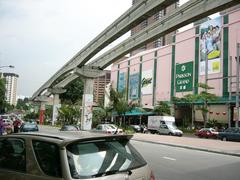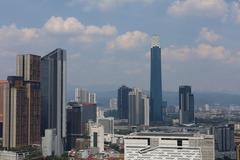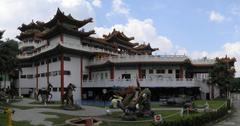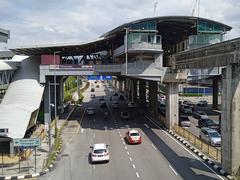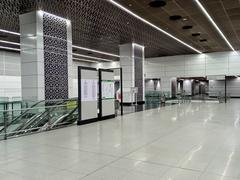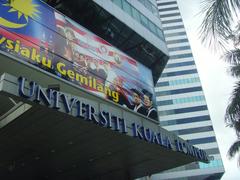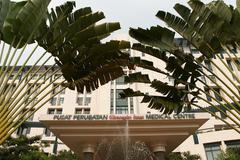
Exchange Square Kuala Lumpur: Visiting Hours, Tickets, and Historical Sites Guide
Date: 04/07/2025
Introduction
Exchange Square Kuala Lumpur, locally known as Bukit Kewangan, is a prominent neoclassical landmark in the heart of Malaysia’s capital. As the headquarters of Bursa Malaysia (formerly the Kuala Lumpur Stock Exchange or KLSE), it stands as a symbol of the nation’s financial aspirations and heritage. Officially inaugurated on July 13, 1997, by then-Prime Minister Mahathir Mohamad, Exchange Square’s classic façade contrasts with Kuala Lumpur’s modern skyline, embodying the city’s evolution from colonial roots to a global economic hub. This guide offers a comprehensive overview of Exchange Square’s history, visiting information, accessibility, and nearby attractions, ensuring visitors experience both its architectural grandeur and the vibrant financial district that surrounds it (Wikipedia; FinanceFacts101; UNESCAP).
Table of Contents
- Introduction
- History and Significance
- Visitor Information
- Economic and Cultural Relevance
- FAQ
- Conclusion
- Quick Facts Table
- References
History and Significance
Origins and Development
Exchange Square was inaugurated in 1997, becoming the new home of Bursa Malaysia (formerly KLSE), solidifying Kuala Lumpur’s place in the region’s financial landscape (Wikipedia). The roots of Malaysia’s stock exchange trace back to 1930 with the Singapore Stockbrokers’ Association, before evolving into the KLSE and eventually Bursa Malaysia (FinanceFacts101).
Architectural Context
The building’s neoclassical design, with its symmetrical columns and grand entrance, was intended to project stability and gravitas—qualities desired by financial institutions. Its presence on Jalan Raja Chulan places it at the heart of Kuala Lumpur’s traditional financial district, easily accessible via the Masjid Jamek LRT Station and GoKL bus routes.
Evolution of the Financial District
The establishment of Exchange Square marked a transformative period for Kuala Lumpur’s financial sector. The area has since expanded, and the development of the Tun Razak Exchange (TRX) precinct nearby represents the city’s ambition to become a leading financial center in Southeast Asia (Grimshaw).
Visitor Information
Visiting Hours and Tickets
- Exterior Access: The exterior of Exchange Square is freely accessible at all times for sightseeing and photography.
- Business Hours: The area is most active Monday to Friday, 9:00 AM to 6:00 PM.
- Interior Access: Entry to the building’s interior is restricted to authorized personnel and participants in official events or pre-arranged tours. There is no public ticketing or standard admission for interior visits.
Accessibility and Travel Tips
- Public Transport: The nearest transit point is Masjid Jamek LRT Station, a short walk away. GoKL free city buses also stop nearby.
- Walking and Wheelchair Access: The area is pedestrian-friendly, with ramps and crossings suitable for wheelchair users.
- Driving: Limited parking is available, especially outside peak hours. Ride-hailing services such as Grab are widely used.
- Visitor Facilities: Benches and shaded areas are available around the square. Security is present, and exterior photography is permitted.
Nearby Attractions and Itinerary Ideas
Within walking distance of Exchange Square, visitors will find:
- Masjid Jamek: One of Kuala Lumpur’s oldest and most striking mosques.
- Central Market (Pasar Seni): A cultural and shopping hub.
- Petaling Street (Chinatown): Famous for street food and local markets.
- Merdeka Square (Dataran Merdeka): The historic site of Malaysia’s independence declaration, surrounded by colonial-era architecture.
- KL City Gallery: Offers insights into Kuala Lumpur’s history and urban development.
- River of Life Promenade: A rejuvenated waterfront area featuring heritage buildings and illuminated fountains.
A suggested walking itinerary: Start at Exchange Square, proceed to Masjid Jamek and Merdeka Square, and end your visit at Central Market.
Photography and Points of Interest
- Best Spots: The neoclassical façade of Exchange Square is best captured during early morning or late afternoon light.
- Etiquette: While photographing the exterior is welcome, avoid photographing security personnel or restricted areas.
Economic and Cultural Relevance
Bursa Malaysia’s Role
As the headquarters for Bursa Malaysia, Exchange Square is central to Malaysian capital markets, supporting trading in equities, bonds, and derivatives. The exchange lists over 900 companies and plays a vital role in both local and regional finance (FinanceFacts101).
Integration with Tun Razak Exchange (TRX)
The TRX precinct is a $10 billion master-planned development nearby, designed to attract multinational financial institutions and feature world-class infrastructure, including the Exchange 106 skyscraper (Grimshaw). TRX integrates retail, residential, office, and leisure spaces, enhancing the city’s global financial profile.
Regional Economic Impact
Exchange Square and its district have been catalysts for economic growth in Kuala Lumpur. The city’s services sector now contributes significantly to Malaysia’s GDP and is a hub for Islamic finance, managing vast assets and attracting international investors (UNESCAP; BusinessABC).
Frequently Asked Questions (FAQ)
Q: What are Exchange Square’s visiting hours?
A: The exterior is accessible 24 hours a day; interior access is restricted and by appointment only.
Q: Is there an entry fee?
A: No, visiting the exterior is free. Interior tours require prior arrangement.
Q: How do I get there by public transport?
A: The nearest LRT station is Masjid Jamek, and the GoKL City Bus Purple Route stops nearby.
Q: Is Exchange Square wheelchair accessible?
A: Outdoor areas are accessible; some internal spaces may have limited facilities.
Q: Are guided tours available?
A: Tours inside the building are not generally available, but walking tours of the area and nearby heritage sites are offered by local operators.
Conclusion
Exchange Square is a focal point in Kuala Lumpur’s financial landscape, fusing historical significance with modern ambition. Visitors are invited to appreciate its neoclassical architecture, explore the vibrant financial district, and discover surrounding historical and cultural attractions. While interior access is limited, the building’s grandeur and strategic location make it essential for anyone interested in the city’s economic and architectural heritage.
For curated itineraries, guided tour bookings, and up-to-date information, download the Audiala mobile app and follow our travel resources.
Quick Visitor Facts
| Feature | Details |
|---|---|
| Location | Jalan Raja Chulan, Kuala Lumpur |
| Year Opened | July 13, 1997 |
| Architectural Style | Neoclassical |
| Visiting Hours | Exterior: 24/7; Best visited 9:00 AM–6:00 PM (weekdays) |
| Entry Fee | Free (exterior) |
| Nearest LRT | Masjid Jamek (10-minute walk) |
| Nearby Attractions | Merdeka Square, Masjid Jamek, Central Market |
| Dress Code | Smart-casual; modest attire for religious sites |
| Currency | Malaysian Ringgit (RM); RM1 ≈ $0.29 USD (July 2024) |
| Language | Malay, English widely spoken |
References
- Wikipedia: Exchange Square Kuala Lumpur
- FinanceFacts101: Kuala Lumpur Stock Exchange
- UNESCAP: Kuala Lumpur City Profile
- Grimshaw: Tun Razak Exchange Master Plan
- BusinessABC: Investing in Kuala Lumpur
- Wikipedia: Economy of Malaysia
For high-quality images and maps, ensure you use descriptive alt text, such as “Exchange Square Kuala Lumpur neoclassical façade.” Internal links to other travel guides and official tourism sites are recommended for further exploration.


